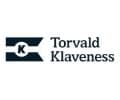Navigating the EU ETS with a shipping pool – preparations and reflections from Baumarine

With vessels over 5,000 gross tons required to monitor, report, and verify their CO2 emissions for voyages linking EU and European Economic Area (EEA) ports, a new era of accountability for shipowners is being ushered in. Aylin Coskun, Head of Partner Success for Baumarine by MaruKlav, the world’s largest Panamax shipping pool, shares her insights into how the pool is navigating this transition while safeguarding the assets and interests of its members.
Proactive preparation and tailored strategies
Coskun advises that Baumarine’s readiness for the EU ETS has been anchored in comprehensive planning and information sharing, having completed its EU trading account registration early and consistently sharing EU ETS guidelines with members. “Every pool member is different; we invest substantial time to listen to them and understand their pain points and needs. We see an overall trend to prioritize ship managers to navigate EU ETS requirements including data collection, reporting, verification, and allowance management. We see it as our role and responsibility to be that partner our members can depend on.”
Incorporating the EU’s carbon cost into their pricing structures, the pool covers its expected emission allowance needs on an ongoing basis. Coskun adds that the pool members are equally proactive, having started opening their EU compliance accounts either by registered owners or management companies, “with our continuous updates, we’re keeping members informed about the latest EU developments and regulations along the way,” adds Coskun.

Support mechanisms for compliance
In terms of support available to members, Coskun explains that members had previous experience complying with emission reduction initiatives having already gone through the EEXI (Energy Efficiency Existing Ship Index) introduction. She adds, “although ultimate EU ETS responsibility lies with the ship owners, the pool is proactive in knowledge sharing and guidelines on regulation implementation and opening accounts. The pool manages and assumes EUA price and volume risks, benefitting members through risk management and diversification capabilities.”
In terms of practical initiatives, the pool prioritizes eco speed as a default instruction in fixtures to reduce vessel emissions, optimizes routes, and conducts routine underwater hull inspections and cleanings to reduce friction. Working on fuel-efficient technologies and alternative fuels will be next on the horizon.

Aylin Coskun, Senior Operations Manager, Head of Partner Success, Pool Operations
As the percentage of emissions covered by EU ETS allowances increases in 2025 and 2026, Coskun details that the pool has invested in reporting systems for monitoring fuel consumption, calculating emissions, and generating compliance reports. “By utilizing these support mechanisms and proactively preparing for the stricter regulations, pool members can ensure a smooth transition and minimize the impact on their operations.”
The importance of reliable and accurate data
A key challenge Coskun highlights is ensuring the quality and accuracy of data since measuring and recording fuel consumption, voyage distance, and weather conditions is crucial for precise emission calculations. She points out bunker fuels constitute one of the most significant operational expenses, and now more than ever it is vital to report accurate bunkers consumption, “inaccuracies can lead to miscalculated emissions and potential penalties – our verification process is rigorous to ensure we take care of members’ interests accurately and thoroughly.”
Funding the pathway to net-zero
The EU ETS currently allocates a portion of the revenue from shipping to the ‘Innovation Fund’, one of the world’s largest funding programs for the demonstration of innovative low-carbon technologies. Asked for her thoughts on how specifically this revenue could be allocated back to shipping, Coskun is an advocate for renewable energy, energy efficiency improvements, and low-carbon technologies, “we can think of it as directly funding our own pathway with investments that would significantly aid in further reducing shipping emissions.”
Source: Torvald Klaveness
Source link
